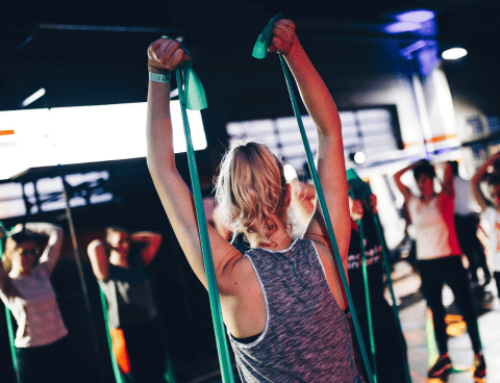Try This Bottoms-Up Kettlebell Challenge for Increased Strength
![]()
Kettlebell exercises are not for the faint of heart or the lax of technique. They are tremendously helpful in improving motor control and movement patterns, but you have to take it slow at first.
Athletes just starting out with kettlebells should perform the half-kneeling variations, then progress to standing variations with time and effort. The half-kneeling position improves trunk stability and corrects squatting, single leg progressions and stepping patterns. It also helps with stability and teaches you to properly align your pelvis and rib cage.
Half-kneeling variations are a great way to improve shoulder stability through facilitation of the rotator cuff and scapular stabilizers.
Half-Kneeling Set-Up
- Start in a lunge (half-kneeling) position with your foot and ankle about hip-width apart. Your down knee should be stacked under the hip; the foot that is down should be in line with the same knee and hip. Lastly, the hips and shoulders should be squared ahead.
Bottoms-Up Kettlebell Set-Up
- If you are a novice, grab a light kettlebell. If you think of yourself as a seasoned athlete or trainer, go heavier. As you see, I did not go too heavy.
- Hold the kettlebell in the bottoms-up position. Hold it in a stable position—slightly below the shoulder, where there should be a uniform distribution of sensation through the loaded arm. Your forearm should line up directly beneath the kettlebell. Recruitment should be on the rotator cuff and grip strength.
The Challenge
- Perform this challenge for two minutes or longer on each side.
- BREATHE
The Benefits
- The half-kneeling position encourages improved balance and stability.
- Holding the kettlebell in the bottoms-up position tests your grip strength. You will see some muscle mass in the forearms. You are training the rotator cuff, enforcing good scapular control and putting your body in an asymmetrical position while distributing a load for building core stability.
Do not get too comfortable. You’re going to get tired. Your forearm is going to move from side to side, your mind is going to tell your body to quit. Do not quit. Control it.
READ MORE:
- 5 Reasons Why You Should Train With Kettlebells
- 5 Best Kettlebell Exercises to Build Explosive Power
- Make These Exercises More Effective by Adding Kettlebells
- 3 Essential Kettlebell Exercises You Should Be Doing
[cf]skyword_tracking_tag[/cf]
RECOMMENDED FOR YOU
MOST POPULAR
Try This Bottoms-Up Kettlebell Challenge for Increased Strength
![]()
Kettlebell exercises are not for the faint of heart or the lax of technique. They are tremendously helpful in improving motor control and movement patterns, but you have to take it slow at first.
Athletes just starting out with kettlebells should perform the half-kneeling variations, then progress to standing variations with time and effort. The half-kneeling position improves trunk stability and corrects squatting, single leg progressions and stepping patterns. It also helps with stability and teaches you to properly align your pelvis and rib cage.
Half-kneeling variations are a great way to improve shoulder stability through facilitation of the rotator cuff and scapular stabilizers.
Half-Kneeling Set-Up
- Start in a lunge (half-kneeling) position with your foot and ankle about hip-width apart. Your down knee should be stacked under the hip; the foot that is down should be in line with the same knee and hip. Lastly, the hips and shoulders should be squared ahead.
Bottoms-Up Kettlebell Set-Up
- If you are a novice, grab a light kettlebell. If you think of yourself as a seasoned athlete or trainer, go heavier. As you see, I did not go too heavy.
- Hold the kettlebell in the bottoms-up position. Hold it in a stable position—slightly below the shoulder, where there should be a uniform distribution of sensation through the loaded arm. Your forearm should line up directly beneath the kettlebell. Recruitment should be on the rotator cuff and grip strength.
The Challenge
- Perform this challenge for two minutes or longer on each side.
- BREATHE
The Benefits
- The half-kneeling position encourages improved balance and stability.
- Holding the kettlebell in the bottoms-up position tests your grip strength. You will see some muscle mass in the forearms. You are training the rotator cuff, enforcing good scapular control and putting your body in an asymmetrical position while distributing a load for building core stability.
Do not get too comfortable. You’re going to get tired. Your forearm is going to move from side to side, your mind is going to tell your body to quit. Do not quit. Control it.
READ MORE:
- 5 Reasons Why You Should Train With Kettlebells
- 5 Best Kettlebell Exercises to Build Explosive Power
- Make These Exercises More Effective by Adding Kettlebells
- 3 Essential Kettlebell Exercises You Should Be Doing
[cf]skyword_tracking_tag[/cf]











